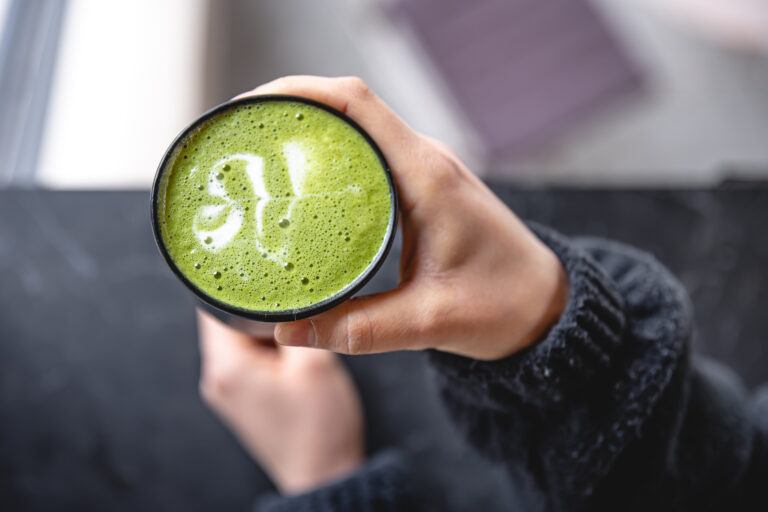- Greta Gerwig’s Barbie marketing campaign is ruling the world in pink, online and offline.
- Experts, however, are warning against the potential mental health implications of such an aggressive marketing strategy.
Go on any social media platform, and you will see these two all over. Oppenhiemer or Barbie or BarbenHeimer will saturate your feed from every directions possible. But, you can rely on Christopher Nolan to promote his cautionary film about the Manhattan Project seriously.
From lead actor Cillian Murphy’s parallel between the groundbreaking nuclear project and the dangers of unbridled artificial intelligence (AI) to the Oppenhiemer cast walking off a London premier to support the SAG-AFTRA strike, in a cursory glance, the film’s promotions appear to hit the right, serious notes.
Greta Gerwig’s Barbie, however, is a different story. By claiming to perpetuate careless fun, it has provided a serious take on post-COVID Hollywood marketing. This relentless and, somewhat aggressive, marketing strives to not just make the film a success but also a phenomenal contribution to “dark comedy” (Should the term be allowed to use at all!). Because of this, you will see Barbie everywhere and anywhere, spreading a fantastic plastic love for everything glamorously hot-pink, glittery, fun, and imaginative.
Moreover, “This Barbie Is Also Very Generous!” She has willingly jumped on the BarbenHeimer wagon, and her more serious peer has considerably benefited from her marketing campaign.
The “double feature” cost-effective marketing strategies have seen memes and videos on platforms like TikTok and Twitter receive massive engagement. Many fans have also released fan-made amusing trailers of the internet phenomenon of Barbenheimer.
The Barbie marketing campaign saw Barbie product tie-ins amongst Mattel (Barbie’s maker), Warner Bros. (Barbie’s movie-maker), and a whooping 100+ companies. There is the Malibu Airbnb listed as “Barbie’s Malibu Dream House” (a real-life three-story mansion straight out of the Barbie universe), Barbie Xbox, “Barbie Land Berry Pink” yogurt, Barbie interior decor and home insurance policies, Barbie-core fashion and luxury shoe collection, a Barbie pride parade, celebrity “Barbie challenges,” AI-powered “Barbie selfie generator,” and so on and so forth.
Google anyone from the cast of the movie and the search, alongside movie details, will reveals glittery pink fireworks all over your device screen. There is even a forced reference to the Barbican tube station in the UK, with many mistaking the same for “Barbiecan”!
The marketing has been innovatively sustained by Mattel’s diverse range of Barbie dolls that sees a growing awareness and inclusivity in toy design. This series involves Barbie dolls from various ethnicities, with different body types such as “curvy,” dolls representing transgender individuals, dolls with a hijab, and dolls with disabilities like Down syndrome and hearing aids.
For instance, in an appearance on the Today show, plus-size model and influencer Ashley Graham presented the Barbie doll designed to resemble her features, such as thick thighs, a round butt, and lower belly fat. Graham expressed that having a Barbie doll that mirrored her own body shape during her formative years would have had a profound positive effect on her self-esteem, helping to alleviate feelings of comparison and poor mental health that she had grown up with.
Graham said: “If I would have had a Barbie that looked like my body shape growing up, I think my mind would have not been as traumatized. And I wouldn’t have looked at myself in the mirror and thought, ‘Why do I have this and she has that?’”
However, in the movie’s leading role, actress Margot Robbie portrays the classic representation of the Barbie doll, featuring the iconic slim “blonde bombshell.” Keeping the viral social media buzz and meme-worthy experiences alive, the past few days have seen Robbie show up on the Barbie “pink carpet” dressed in a Barbie-inspired dream wardrobe.
Her stylist Andrew Mukamal turned to all major fashion houses to draw inspiration from original Barbie dolls from the 1950s. From vintage tweed to classic evening Satin, Robbie is parading the 64-year-old larger-than life inspiration of her onscreen character in a manner that goes beyond the traditional movie promos.
Many marketing experts have lauded the Barbenheimer trend and the Barbie movie campaign as a genius marketing lesson and not simply a fleeting social media trend. Warner Brothers and Mattel have rolled out an extravagant $100 million specifically for the exhaustive marketing campaign to help the film dominate the cultural conversation. Paul Dergarabedian, senior media analyst for the marketing company Comscore, said: “This is a test case in how to perfectly market a movie.”
Marketing gurus in a BBC interview said: “What you’re seeing isn’t just a promotion for the film. It’s for the Barbie brand for everything pink and the color. So you might think hang on this marketing is all over the place. It’s more like [they’re selling] Barbie’s lifestyle plan now, like this is how Barbie would dress up, talk, the things she would eat, what kind of candles she would have in her house …”
Nonetheless, experts however lauding of Barbie’s “Let’s Go Party” promotional stunts, also warned of the drawbacks associated with such a blitzkrieg marketing campaign. Succession actor J. Smith-Cameron tweeted: “Is anyone else feeling bullied into being excited about the Barbie movie? I expect to enjoy the movie; but the marketing is like a tsunami.”
Excessive Marketing And Mental Health
Barbie‘s marketing team appeared to have taken “I’m a Barbie girl in the Barbie world/Life in plastic, it’s fantastic!” extremely imaginatively and seriously. And while the fun and movie-making skills are appreciated, it is true that excessive marketing can indeed have a negative impact on mental health in several ways:
1. Triggering compulsive buying
Aggressive marketing techniques often create a sense of urgency, emphasizing the need to acquire certain products or services. The Barbie marketing campaign, as an extension of the movie itself, has encompassed several clothing lines. Celebrities and influencers frequently promoting these high-end products are all over social media.
This constant pressure to buy or keep up with the latest trends can lead to heightened stress, anxiety levels, and buying impulses. People may feel overwhelmed by the fear of missing out or not being able to meet societal expectations.
2. Financial strain
Aggressive marketing tactics promote consumerism and materialism, pressurizing individuals into making impulsive purchases or accumulating debt to keep up with the advertised (often unrealistic) lifestyle.
Mattle’s extensive Barbie marketing campaign seeks to expand the Barbie universe along the lines of Disneyland or the Harry Potter franchise. Consequently, the venture has seen a saturated frenzy of Barbie branding products from houses to cars to Burger King’s Barbie meal.
Financial strain resulting from excessive spending to collect the “ultimate Barbie experience” can lead to monetary stress and anxiety, broken relationships, and a reduced sense of well-being. This focus on external possessions can detract from more meaningful sources of fulfillment, such as relationships, personal growth, and experiences.
3. Body image dissatisfaction
Barbie has come under fire for decades for promoting an exclusive and unhealthy beauty standard in her whiteness, blondness, and unhealthy skinniness. The movie is touted as a feminist interpretation of the Barbie folklore, but the movie’s marketing campaign has clearly been promoting these idealized and often unrealistic standards of beauty, leading to body image issues.
Like Ashley Graham’s unpleasant Barbie memories in childhood, experts fear that this constant exposure to images of flawless actresses or digitally altered dolls (thanks to the Barbie marketing campaign) can contribute to feelings of inadequacy, low self-esteem, and dissatisfaction with one’s own appearance—especially in vulnerable adolescent girls, the chief consumers of the Barbie dolls. Some people even voiced concerns that Barbie will cause a resurgence of the 1950s’ “Tradwife” Movement that espoused patriarchal housewife ideals for women.
4. Comparisons and social media
The Barbie marketing campaign has generated an extremely creative fan-following that is bombarding social media sites with Barbie and BarbenHeimer memes. Studies show that marketing efforts like these are strongly linked to social media-triggered mental health conditions like depression, performance anxiety, chronic procrastination, and reduced creativity.
Comparing one’s own creative ventures and oneself to others’ highlight reels can lead to feelings of inferiority, loneliness, and depression. Constant exposure to carefully curated online content can distort perceptions of reality and contribute to a negative self-image.
It’s important to note that while aggressive marketing—like the one being carried out by the Barbie marketing campaign—can contribute to negative mental health effects, individual resilience, media literacy, and self-awareness also play a role in mitigating the impact.
Developing a critical mindset, setting boundaries, and seeking support when needed can help protect one’s mental well-being in the face of excessive marketing. In fact, it is important to strike a balance between marketing and mental health considerations to ensure a healthy and positive consumer experience.



